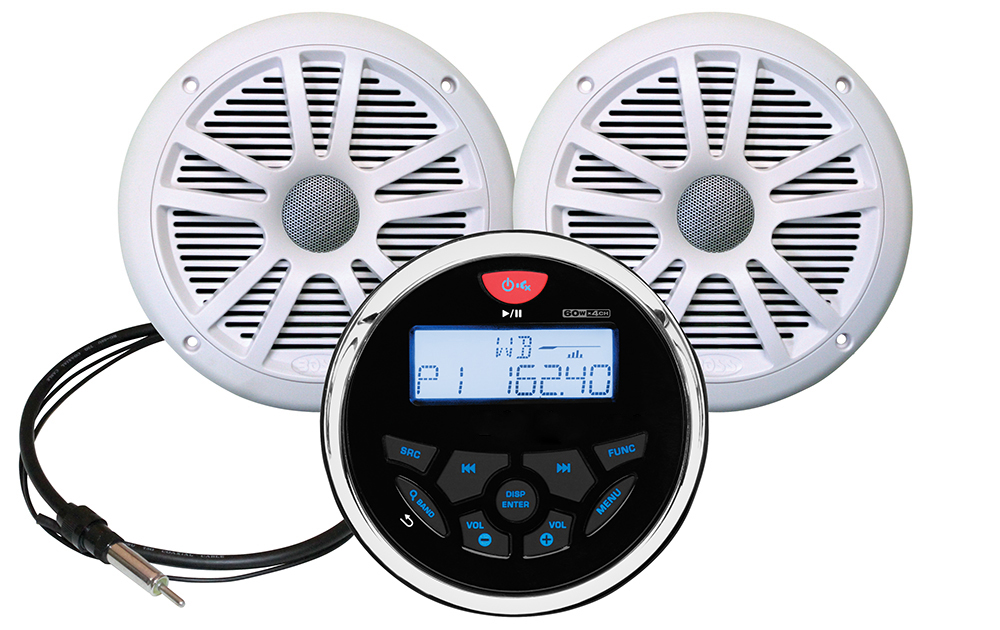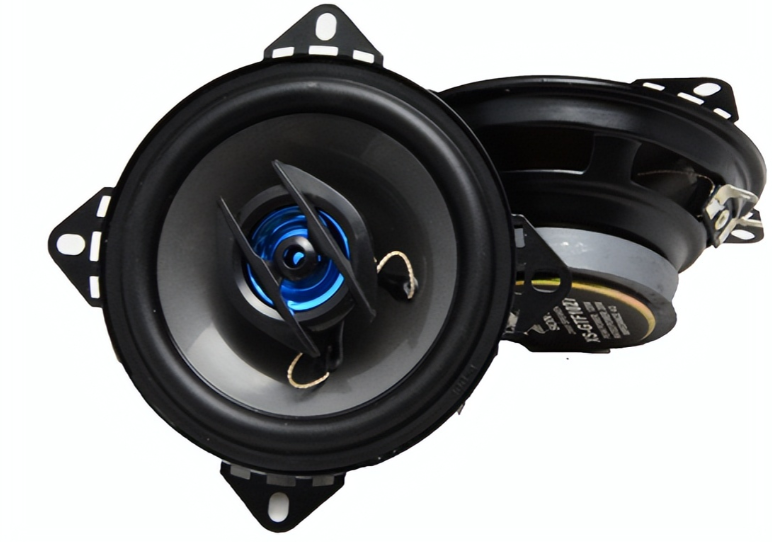You have to confront the dilemma of choice for a fantastic music experience ahead. Be it enjoying music on water or cruising down the highway, choosing the right speakers is what’makes the difference. Most people do not even realize that boat speakers exist, and they often go ahead and use their car speakers right on their boat with decidedly less-than-great results. In fact, there are huge discrepancies between marine speakers and car speakers concerning design, function and application scenarios.In this article, we’ll compare these two types of speakers from a variety of perspectives to help you find the ideal choice to make every musical experience the best it can be!
What exactly are marine speakers?
Marine speaker is a kind of speaker designed for water environment, mainly used in yachts, speedboats, sailboats and other vessels. Its design goal is to be able to work properly in wet, high salinity environments while providing high quality audio output. Marine speakers are usually characterized by waterproof, UV protection and corrosion resistance.
A car speaker is a type of loudspeaker that is installed in the interior of a vehicle. Designed with a focus on compatibility with the car’s interior and optimization of the soundstage, car speakers are commonly found in the door, dashboard and trunk areas.

distinction distinction made in concrete terms
Environmental adaptability and protection
One of the best features of marine speakers is their excellent waterproof performance. Since boats often operate in wet, watery environments, speakers need to be able to resist water erosion, including rain, seawater spray, and high humidity conditions. Thus, marine speakers typically come with the following characteristics:
IP rating: Most marine speakers are rated at least IP65 to protect against dust ingress and multi-directional water spray.
Anti-corrosive materials: The housing is made of rust-resistant metal or high-quality plastic to protect the internal components from sea salt corrosion.
Sealed design: the speaker’s connection points and seams are usually specially sealed to ensure that the internal circuits are protected from water vapor intrusion.
While speakers used for vehicles have more stable environments where they are occassionally exposed to rather high humidity or water spray, design approaches in automobile speakers target sound quality optimization, not protection from extreme environments. Nevertheless, automotive speakers need to consider environmental matters, such as:
Temperature variations-Externally attached speakers might be exposed to direct sunlight or air conditioning, and thus need to operate safely within a wide temperature range, at high and low temperatures.
Vibration and Noise-While the car is moving, vibration and noise from the road may affect the performance of the speakers.
sound performance
Marine speakers were originally designed to provide clear and powerful sound in open environments. This requires them to have higher power and volume outputs to overcome disturbances such as sea breezes and engine noise, and to achieve long-distance propagation. In addition, the frequency response of marine loudspeakers tends to focus on mid- to high-frequency performance to ensure clearer sound propagation over water. However, as the design goal lies more in open space coverage, the sound quality is usually less detailed than that of automotive speakers.
Car speakers, by contrast, are principally used in enclosed spaces and tuned towards sonic nuance and layering. The frequency response they aim for is relatively flat so as to get a true-to-nature sound, and they have much better power snapped commercials Hospital in the bass department. With advanced car speaker systems, the sound field is positioned within the park by virtue of the interior space and seating arrangement to give patrons an immersive listening experience. At that point, the advantage of car speakers starts showing because of the sound quality and spatial adaptations.

Design and Installation
The design of marine speakers is centered on practicality, while taking into account the aesthetics of appearance to meet the special needs of the marine environment. First of all, marine speakers usually adopt anti-UV design, which can prevent the shell from aging and fading caused by long-term sun exposure. Secondly, its flexible installation characteristics make it adapt to diverse hull structure, whether it is the deck, cabin or handrail, can be easily installed. In addition, the cables of marine speakers are treated with waterproofing to ensure that there will be no short-circuit or corrosion problems in wet environments.
In contrast, the design of automotive speakers pays more attention to the harmony and unity with the interior decoration of the car, and its installation is more standardized. Most of the car speakers use embedded installation, and the door, dashboard or trunk seamlessly integrated, to maintain the integration of vehicle interior aesthetics. At the same time, high-end car audio systems support customized modification to meet the pursuit of personalized sound quality for audiophiles. In addition, the car audio system is usually integrated with the multimedia system, and the volume and sound can be easily controlled through the car screen or steering wheel, further enhancing the convenience of use.
Durability and longevity
Marine speakers are especially designed for durability in order to maintain high performance in extreme environments. First, the use of corrosion-resistant materials ensures that they can operate for long periods of time in marine environments, resisting the erosion of sea salt and moisture. Secondly, marine speakers have excellent weather resistance and can withstand strong winds and rain, extreme temperatures and prolonged exposure to the sun. However, although marine speakers are designed to be very durable, the intense use of the environment may still affect their life, so regular maintenance is required to extend the use of time.
In contrast, car speakers do not need to deal with extreme environments, but still meet everyday needs in terms of durability. Their dust-proof design prevents dust from entering the speakers and maintains the stability of sound performance. At the same time, high-quality car speakers have a long service life, but may also be affected by vibration and temperature changes in the car. Therefore, car speakers pay more attention to the balance between durability and sound quality performance in a stable environment.
price difference
Marine speakers generally cost more than automotive speakers, because special materials and processes used in these speakers, such as waterproofing, corrosion resistance, and UV protection, significantly increase their production costs. Moreover, they fall under relatively niche market categories and are manufactured in fewer numbers; hence the prices tend to be higher. In stark contrast, automotive speakers range in pricing in terms of basic to high-end customization, enabling the consumer to select based on affordability. This gives automotive speakers greater flexibility and choice in terms of price.
advantages and disadvantages
Marine speakers offer some of the finest in weather resistance against water, corrosion, and the elements; thus sound quality should not suffer too much in an open area even when volume output is limited. They are built to endure harsh weather conditions and last long periods. However, they tend to sacrifice audio quality in an effort to make up for that durability and that is probably why they are costly and not quite good performers outside their respect domains of application.
Car speakers, on the other hand, are favored for the smoothness of sound and credible bass apparatuses, blending well within the auto setup and the overall aesthetics. They are available in a wide range of prices and consumers have more choices. However, car speakers are not suitable for wet or highly corrosive environments and have limited volume output in open spaces.
Applicable Scenarios
Marine speakers are designed to serve water activities and are therefore suitable for a wide range of water scenarios, such as yachts, speedboats, sailboats and other private boats, fishing boats, workboats and other commercial uses, as well as occasions such as water parties or outdoor concerts.Thanks to its high sound output capacity, resistance towards water, and corrosion, it can handle the diverse demands of a water environment.
On the other hand, car speakers serve the basic purpose of entertainment for cars and are generally suited for daily commutes and long trips, while they mostly meet high-performance needs for modified car enthusiasts. Still, car speakers will also ensure great multimedia entertainment experiences, such as movies or games, providing car owners with rich audio enjoyment.
Marine speakers and automotive speakers have various advantages of their own and scenarios where they apply. Which speakers you choose depends on your specific needs and the environment in which you use them. If you need to enjoy music in a humid environment, marine speakers are definitely the best choice. If you are looking for a high-fidelity sound experience in an indoor environment, then a set of quality car speakers will better meet your expectations.
